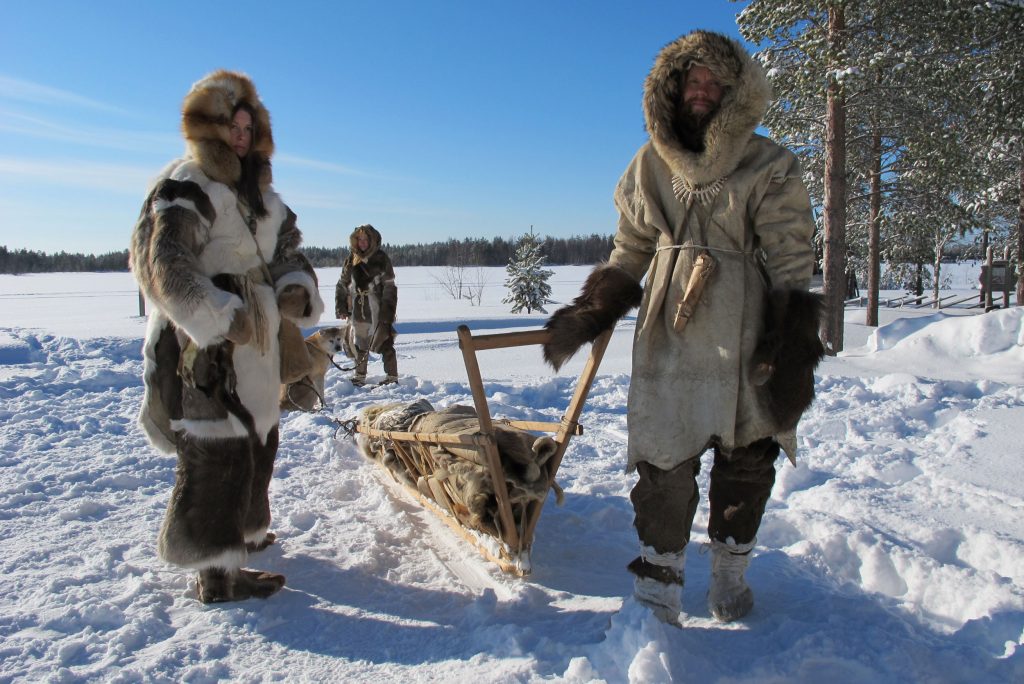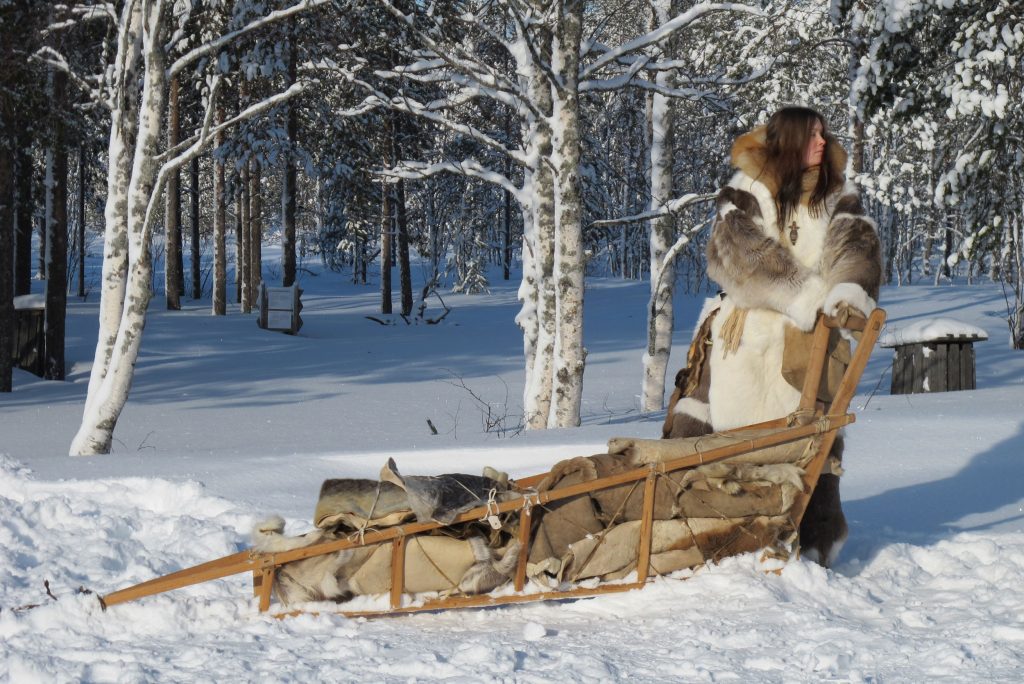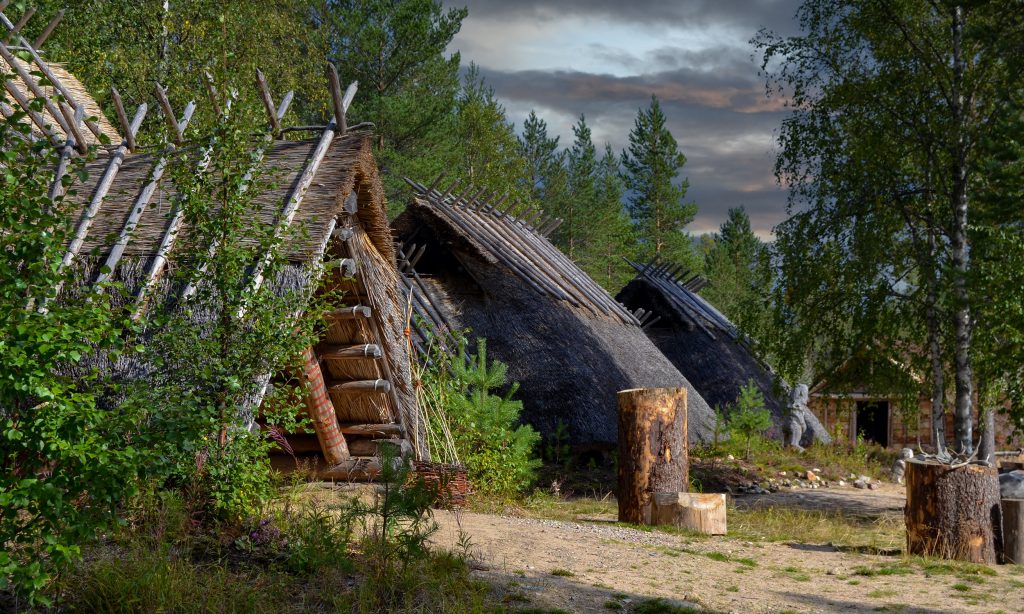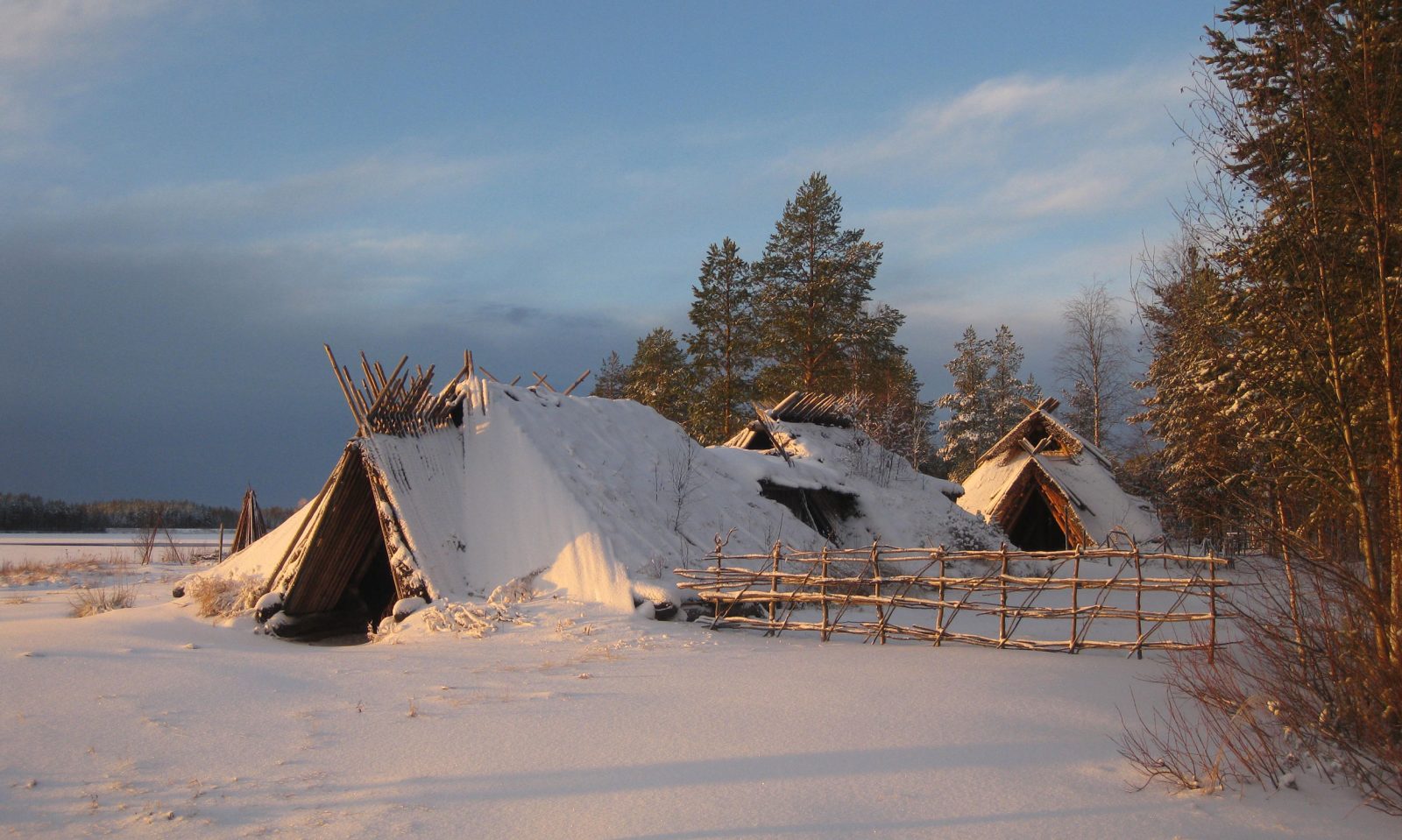Approximately 7,000 years ago, settlers had moved from the east along the Iijoki River to the Pahkakoski area where the oldest permanent dwellings in the region have been found. Salmon swimming up the river and seals following the fish attracted settlers to the area. At the time, everything that was needed for living was produced locally. No evidence of long-distance trade has been found in Kierikki from this period. The dwellings were partly dug into the ground and separated from each other, and typical villages had up to 100–150 inhabitants and a dozen dwellings side by side.

Around 6,000 years ago, the people in Kierikki lived in their villages all year round. The communities began to make more efficient use of the food resources in their area, leading to a significant increase in population. Seal hunting became the main livelihood of the coastal villages of the Bothnian Sea. Skins and blubber were valuable commodities. Efficient fishing meant that catches exceeded local needs and could be used to buy flint from the White Sea and amber jewelry from the Baltic. Trade also introduced the inhabitants to foreign peoples and customs.
Growing prosperity led to an increase in population, which required an increasingly efficient food supply, a more detailed division of labor and an organization of defense. The development of the community was followed by large and well-planned building projects. In Kierikki, terraced houses up to 60 meters long with several rooms were built. These large buildings could accommodate several families.

The villages were mostly located on the sunny north bank of the river, where the houses were built on the sandy beaches. Within a few decades, however, the coastline shifted so much that the living environment became less favorable and the village was rebuilt closer to the shore.
Approximately 5,000 years ago, the village culture of Kierikki began to decline, the population became smaller and the villages were scattered. This was probably caused by a cooling climate that reduced the number of seals in the Bothnian Sea. The seals were the foundation of wealth in the region. It is also possible that the wealth accumulated in the area attracted unwanted visitors and the large villages could no longer be defended. The population may also have been affected by new epidemics brought by traders against which the residents had no resistance. The remaining families scattered and the age of large villages was over.

